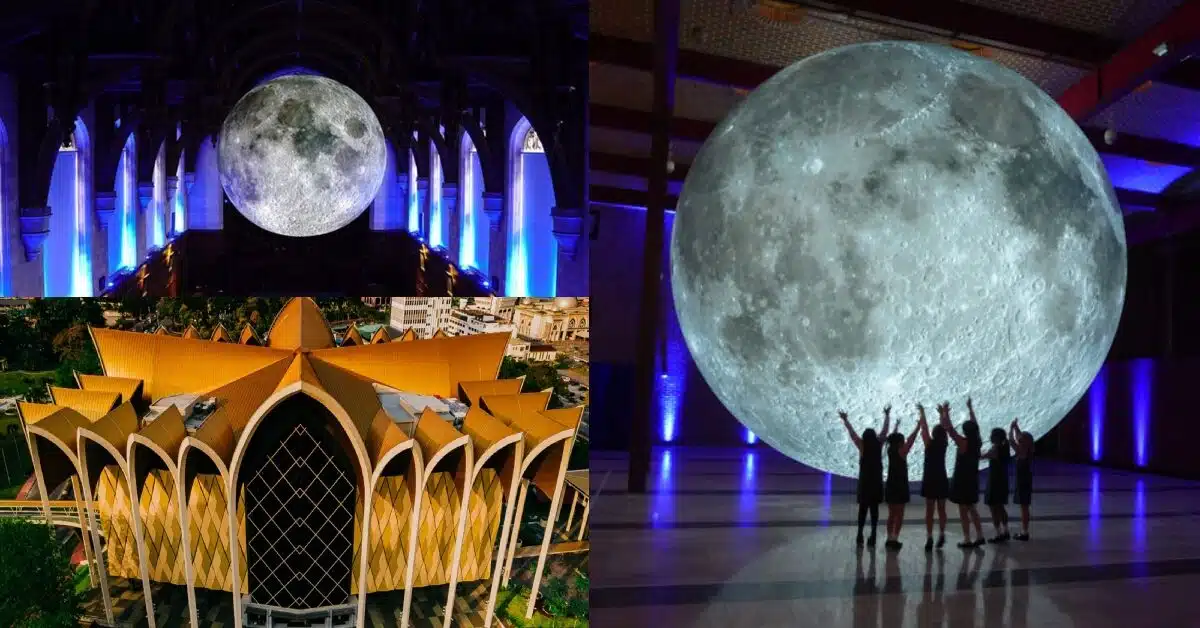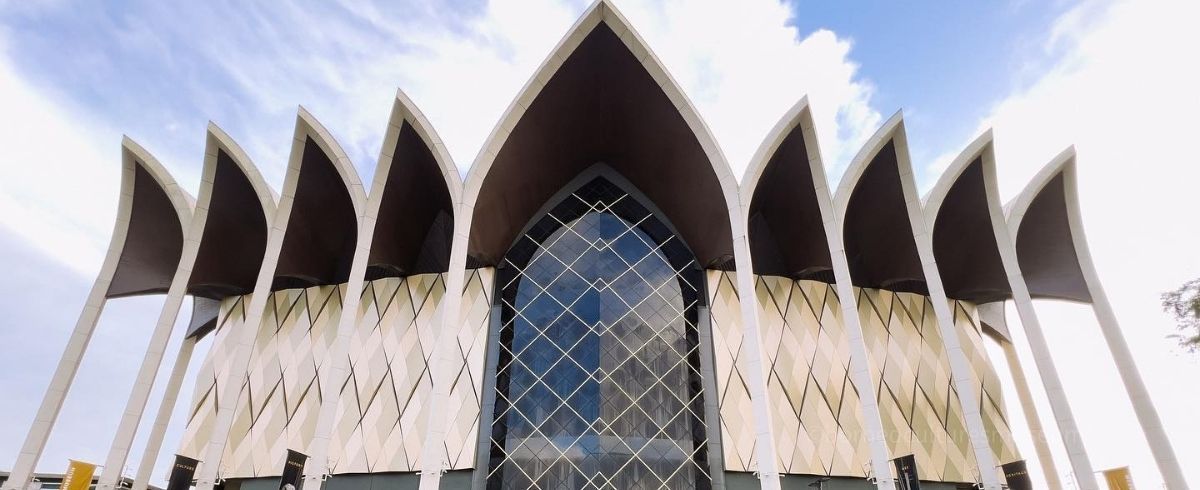Journey Via Time at Borneo Cultures Museum
Journey Via Time at Borneo Cultures Museum
Blog Article
Look Into the Interesting Globe of Borneo's Cultural Heritage: A Comprehensive Guide to the Cultures Gallery Experience
Submersing oneself in the complex tapestry of Borneo's social heritage belongs to beginning on a voyage via time and tradition. The blend of native people, typical handicrafts, fascinating efficiencies, and historic narratives housed within the confines of the island's galleries offers a peek into a globe bursting with profound heritages and vivid personalizeds. As site visitors traverse with these repositories of culture, they are bid to discover a world where past and existing intermingle, welcoming reflection on the durability and richness of Borneo's varied heritage.
Native Tribes of Borneo
Borneo is home to over 50 aboriginal people, each with distinct cultural practices and practices that have been protected for generations. Among these tribes are the Iban, recognized for their elaborate tattoos and conventional longhouses where numerous households live. The Dayak individuals, another prominent team, participate in fancy spiritual events and are experienced craftsmens, crafting intricate timber carvings and woven textiles. The Penan people, on the various other hand, are nomadic hunter-gatherers with a deep connection to the rainforest, using blowpipes for searching and celebration wild plants for nutrition.
These native people play a crucial role in preserving Borneo's rich cultural tapestry. Despite external influences and innovation, several tribes remain to maintain their languages, personalizeds, and ideas. Visitors to Borneo have the chance to immerse themselves in the one-of-a-kind lifestyles of these people with social trips, homestays, and community-based tourist efforts. By involving with these aboriginal communities, visitors can gain a much deeper gratitude for the variety and durability of Borneo's native heritage.
Typical Handicrafts and Artifacts
One prominent example of typical inventions in Borneo is the production of woven goods - Borneo Cultures Museum. Experienced weavers use natural fibers like bamboo, rattan, and pandan delegates develop elaborate baskets, mats, and devices embellished with vivid patterns that hold symbolic meanings within the community
The art of woodcarving is an additional substantial aspect of Borneo's typical inventions. Craftsmens sculpt complex layouts into numerous sorts of timber to produce masks, sculptures, and musical tools that not just offer practical functions however also hold social significance, often portraying folklore or spiritual beliefs.
Additionally, Borneo is renowned for its beadwork, with craftsmens thoroughly crafting beads from materials like glass, seeds, and coverings to create precious jewelry, apparel decorations, and ornamental items that showcase the region's lively aesthetic customs. These typical handicrafts and artefacts not just act as tangible expressions of Borneo's social heritage however also give insights into the communities' ideas, values, and way visit our website of living.

Cultural Performances and Festivals
With an ingrained link to their social customs, the communities in Borneo come alive through vibrant cultural efficiencies and events that celebrate their heritage. These events display the rich diversity of Borneo's ethnic groups, each offering unique dancings, songs, and routines that have been given with generations. Among one of the most popular celebrations is the Gawai Dayak, celebrated by the Dayak individuals to note the rice harvesting period. During this celebration, traditional songs loads the air, detailed dancings are executed, and intricate standard costumes are put on. Another significant occasion is the Pesta Kaamatan, celebrated by the Kadazandusun community to appreciate for the rice harvest. This celebration includes cultural efficiencies, including the Sumazau dancing, and traditional sporting activities like the bamboo dancing. Visitors to Borneo can immerse themselves in these festivities, obtaining a much deeper understanding of the area's social heritage and experiencing the cozy hospitality of its people. Social efficiencies and events function as a lively suggestion of Borneo's rich cultural tapestry and the importance of maintaining these practices for future generations.
Historic Narratives and Artefacts
Checking out the historical stories and artefacts of Borneo uses a fascinating look right into the region's rich past and cultural evolution. Borneo's historic tapestry is woven with diverse impacts, reflecting the interactions in between aboriginal people, Chinese investors, European colonizers, and Malay sultanates. The artifacts located in Borneo display this detailed history, varying from typical crafts like complex beadwork and woodcarvings to archaeological prizes such as ancient pottery and devices.
Among the most compelling aspects of Borneo's historical narratives is the preservation of dental customs passed down with generations. These tales provide understandings right into the beliefs, customizeds, and lives of Borneo's residents throughout the centuries. The artefacts unearthed from historical sites supply concrete links to these narratives, permitting visitors to witness the product next page culture of previous societies firsthand.
Contemporary Cultural Preservation Efforts

In addition, curricula and social exchange tasks play a crucial duty in elevating recognition regarding the significance of preserving Borneo's unique social heritage. By involving institutions, museums, and the wider area in discussions and tasks that commemorate Borneo's diverse societies, conservation efforts can acquire energy and assistance for long-lasting sustainability. Collaborations in between governmental bodies, charitable companies, and regional neighborhoods are crucial in driving these preservation ventures forward, ensuring that Borneo's abundant social heritage continues to be dynamic and cherished for generations to find.
Conclusion
In verdict, the cultural heritage of Borneo is diverse and rich, with aboriginal tribes, traditional inventions, social efficiencies, festivals, historic narratives, and modern preservation initiatives all adding to its uniqueness and importance. visit the site Visitors to Borneo's social galleries can gain a much deeper understanding and recognition of the area's cultural heritage, permitting for a more immersive and informing experience.
Immersing oneself in the intricate tapestry of Borneo's cultural heritage is comparable to beginning on a trip through time and custom.With an ingrained connection to their social traditions, the communities in Borneo come active with vivid cultural efficiencies and celebrations that commemorate their heritage. Social performances and celebrations offer as a vibrant tip of Borneo's abundant cultural tapestry and the significance of maintaining these traditions for future generations.
Furthermore, educational programs and social exchange tasks play an essential function in increasing understanding concerning the importance of preserving Borneo's distinct cultural heritage. Partnerships in between governmental bodies, charitable companies, and local neighborhoods are necessary in driving these preservation ventures forward, guaranteeing that Borneo's abundant cultural heritage remains vibrant and cherished for generations to come.
Report this page